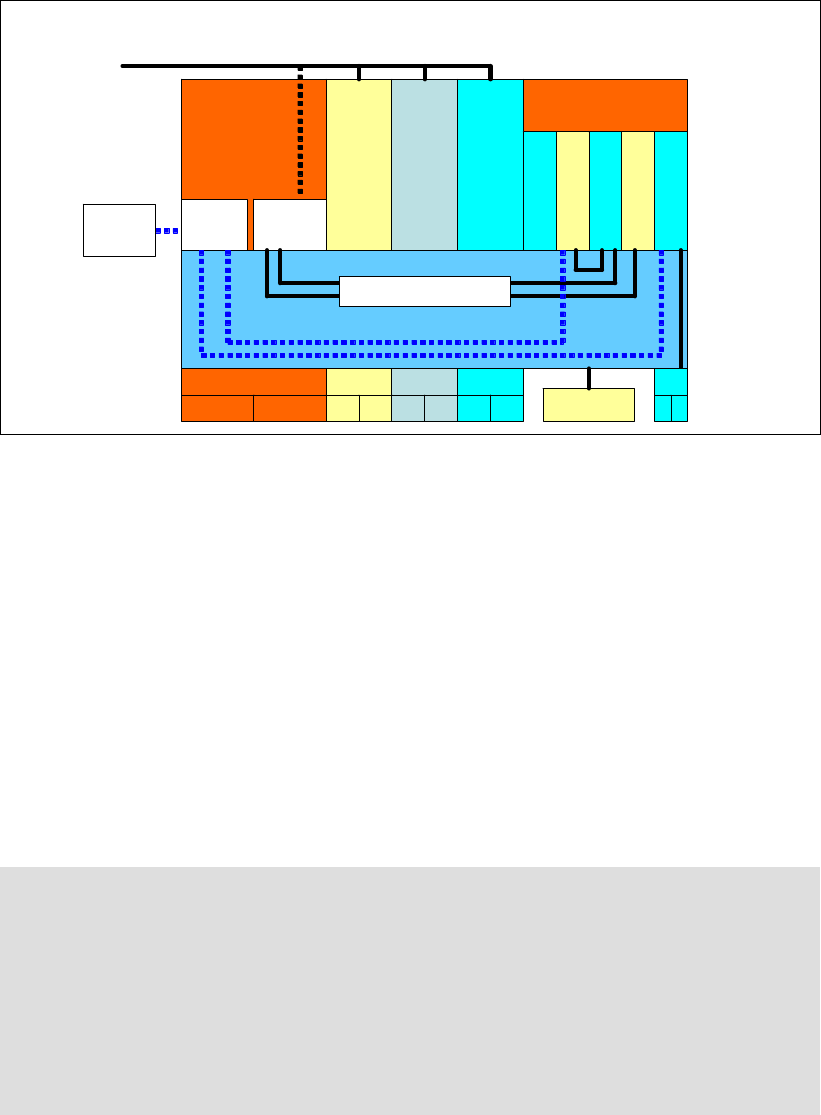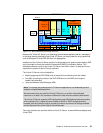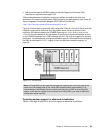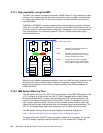
Chapter 2. Architecture and technical overview 55
Figure 2-15 Micro-Partitioning technology and VIOS
Because the Virtual I/O Server is an operating system-based appliance server, redundancy
for physical devices attached to the Virtual I/O Server can be provided by using capabilities
such as Multipath I/O and IEEE 802.3ad Link Aggregation.
Installation of the Virtual I/O Server partition is performed from a special system backup DVD
that is provided to clients that order the Advanced POWER Virtualization feature. This
dedicated software is only for the Virtual I/O Server (and IVM in case it is used) and is only
supported in special Virtual I/O Server partitions.
The Virtual I/O Server can be installed by:
Media (assigning the DVD-ROM drive to the partition and booting from the media)
The HMC (inserting the media in the DVD-ROM drive on the HMC and using the
installios command)
Using the Network Install Manager (NIM)
Two major functions are provided with the Virtual I/O Server: a shared Ethernet adapter and
Virtual SCSI.
Note: To increase the performance of I/O-intensive applications, use dedicated physical
adapters using dedicated partitions.
We recommend that you install the Virtual I/O Server in a partition with dedicated
resources or at least a 0.5 processor entitlement to help ensure consistent performance.
The Virtual I/O Server supports RAID configurations and SAN-attached devices (possibly
with multipath driver). Logical volumes created on RAID or JBOD configurations are
bootable, and the number of logical volumes is limited to the amount of storage available
and architectural limits of the Logical Volume Manager.
Virtual I/O
Server
Virtual
adapter
Virtual
SCSI
Linux AIX
v5.2
AIX
v5.3
AIX v5.3AIX v5.3
LinuxLinux
AIX v5.3AIX v5.3
LinuxLinux
AIX v5.3AIX v5.3
POWER Hypervisor
Virtual Ethernet
I/O
Storage Network
I/O
Sto Net
I/O
Sto Net
I/O
Sto Net
HMC
2 CPUs 2 CPUs 3 CPUs 3 CPUs 6 CPUs
I/O
S N
Network
External
storage
Micro-Partitioning
POWER5 Partitioning


















